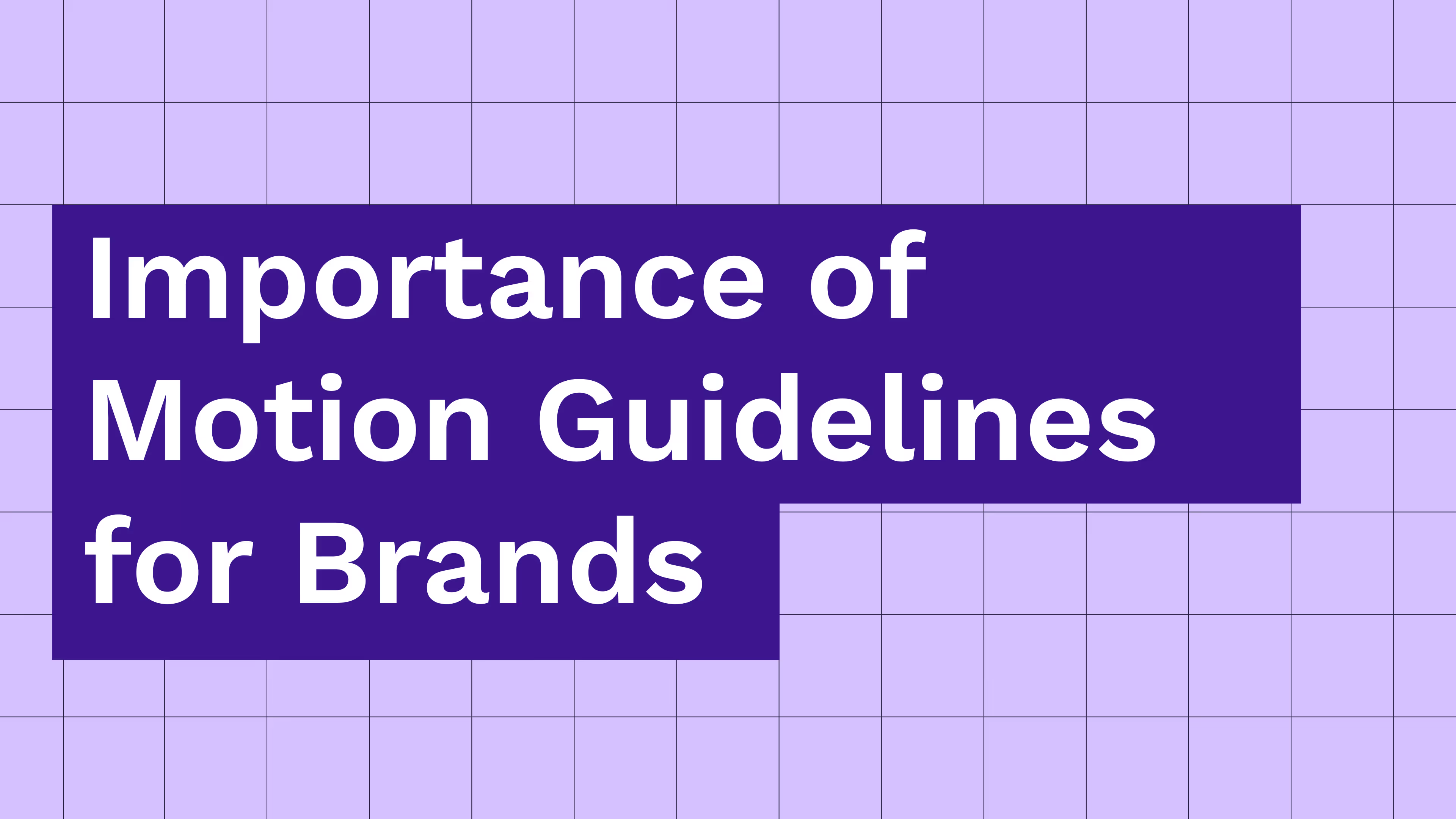Table of Content
One of the key challenges most brands face today is how to scale motion effectively. As motion becomes an integral part of visual communication, ensuring consistency and maintaining a strong identity across various platforms is critical.
Motion guidelines play a pivotal role in addressing this challenge. By defining a brand's unique voice in motion, these guidelines not only ensure consistency but also provide a framework that seamlessly applies across a wide range of touchpoints. The importance of this approach cannot be overstated, especially as the demand for motion increases in today’s digital landscape.
Why Brands Need Motion Guidelines
Motion is often seen as a one-off solution or an isolated element within a specific project, but in reality, it is much more. It should be treated as a scalable and strategic asset that can enhance brand communication across all platforms. The absence of clear motion guidelines can lead to inconsistent applications, which in turn dilutes a brand’s identity.
Here are the main reasons why brands should invest in motion guidelines:
- Defining the Brand’s Unique Voice: Motion guidelines help establish a distinct voice for your brand. This involves creating a consistent style that reflects your brand’s tone, personality, and values through movement. Whether it's through animations, transitions, or stylized elements, having a defined approach ensures that the brand’s message is always conveyed in a clear and engaging way.
- Consistency Across Touchpoints: One of the biggest challenges with motion design is maintaining consistency, especially when applied across different platforms. With motion guidelines in place, it becomes easier to ensure that the brand’s visual identity is cohesive, regardless of the medium—be it social media, user interfaces, or marketing campaigns.
- Scalability: As brands grow, so does the demand for content. Motion guidelines offer a scalable solution by providing a strategic framework that can be applied to various projects. This makes it easier for design teams to create new assets without sacrificing consistency or quality.
The Role of Motion Guidelines in the Design Process
Creating motion guidelines starts with a comprehensive audit of the brand’s current motion strategy. This involves identifying areas where motion can enhance user experience, engagement, and communication. From there, a set of core principles and motion pillars is developed, which forms the foundation of the brand's motion identity.
The process culminates in clear documentation that is accessible to teams at all levels. This documentation outlines how motion should be implemented, including details on typography, imagery, transitions, and other stylized components. Having this information readily available makes it easier for designers, developers, and marketing teams to collaborate effectively.
Templates for Regularly Produced Content
Another essential aspect of motion guidelines is the creation of templates for key touchpoints, such as social media and user interfaces. These templates standardize the use of motion in regularly produced content, ensuring that each piece is aligned with the brand’s overall identity. This not only saves time but also guarantees that all motion assets are cohesive and on-brand.
Key Deliverables in Motion Guidelines
A comprehensive set of motion guidelines typically includes:
- A Motion Audit & Strategy: A detailed analysis of the brand’s motion needs and a strategy to address them.
- Core Motion Pillars & Principles: Defining the foundational principles that will guide all motion design efforts.
- Stylized Motion Components: Guidelines for typography, imagery, transitions, and other key elements.
- Templates for Key Touchpoints: Pre-designed templates for platforms such as social media and UI.
- Detailed Documentation: Clear, concise guidelines for the broader team, making it easy to apply motion across different projects.
Conclusion
In today’s fast-paced digital world, motion is no longer just a design trend—it’s an essential tool for enhancing brand communication. Having motion guidelines in place is crucial for ensuring consistency, scalability, and a unique voice that resonates with your audience. Whether it’s for social media, websites, or marketing campaigns, clear motion guidelines help brands maintain a strong, cohesive identity across all platforms.
If your brand is ready to explore the power of motion, consider developing comprehensive motion guidelines to elevate your visual communication strategy.

























































